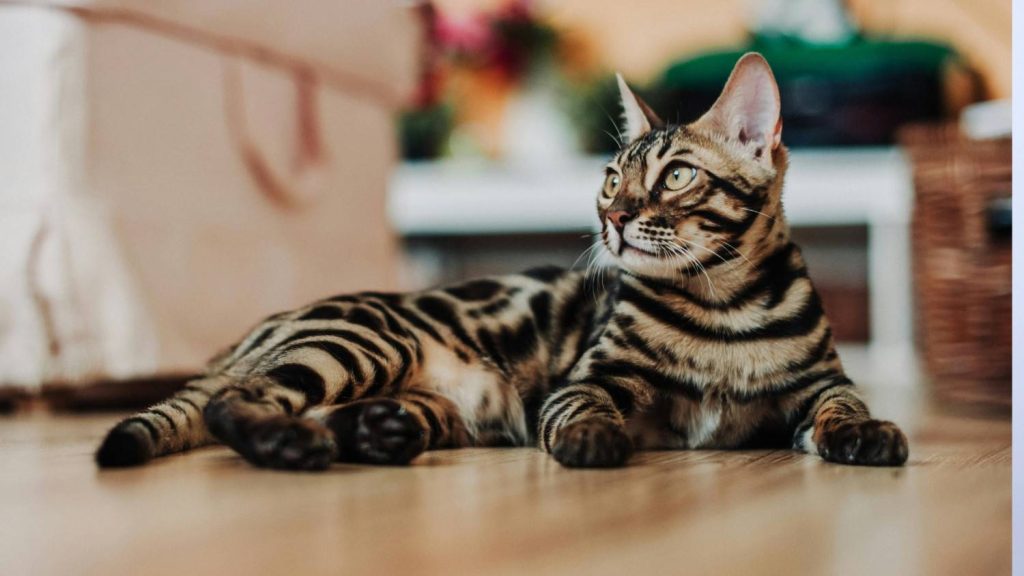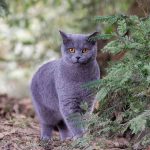If you’ve ever dreamed of owning a cat that looks like it walked straight out of the jungle but acts like a playful, loving domesticated kitty, the Bengal is exactly that. I’ve spent years around cats, but the first time I met a Bengal cat, its sleek, muscular build and bold personality instantly struck me. With a wild-looking yet well-balanced body, striking marbling and spotting on its thick, luxurious coat, and athletic outline, the Bengal truly stands apart from other domestic cats.
Breeders developed the Bengal breed by cross-breeding domestic cats like the Abyssinian, Egyptian Mau, and American Shorthair with the Asian leopard cat (Felis bengalensis). This hybrid origin gives Bengals their wild appearance and energetic vibe. While they come in both short-haired and long-haired variants, every Bengal shares those vivid patterns and a smart, curious, and hyperactive personality. Whether you’re a potential Bengal cat parent or just considering purchasing one, there’s so much to learn from their fascinating journey—from their growing popularity to why they’re not your typical house cat.
Bengals are active, sociable, and full of charm. Their exaggerated features, like wedge-shaped heads, long faces, smallish ears, neat paws, and bold expressions, give them an exotic but not extreme structure. I’ve found that these large, muscular cats are not only beautiful and super-cute, but they also carry a personality that’s as vivid as their patterned coats. Whether it’s their athletic build, elegant movement, or the way they engage with their surroundings, Bengals are the perfect balance between wild and domestic—a living piece of art in your home.
Why to Choose Bengal Cat Breeds
Bengal cats are a perfect mix of wild beauty and domestic charm. With their striking coat patterns, muscular build, and smart, active personalities, they bring both elegance and energy into your home. If you’re looking for a loyal, curious, and interactive companion who loves to play and explore, the Bengal is an exceptional choice for experienced cat lovers.
History and Origin of Bengal Cats
The Bengal cat may look wild, but its story is deeply rooted in a careful and passionate process of breeding and vision. This modern cat breed originated in America and began taking shape in the 1960s, when Dr. Willard Centerwall, a pediatrician, started crossing domestic cats with the Asian Leopard Cat (Prionailurus bengalensis) to study genetics and their immune response to feline leukemia virus. His research aimed to help humans with compromised immune systems, and it eventually began a fascinating journey that developed into what we now admire as the Bengal breed.
I find it amazing how unrelated goals led to the creation of such a stunning animal. Jean Sudgen Mill, a conservationist, had also experimented with cross-breeding exotic cats and took over the hybrid kitties when Centerwall became critically ill. After her husband passed away, she resumed her work and continued to mate the cats, eventually promoting the newly developed breed. She even gave it the name “leopardette”, later changed to Bengal, in honor of its scientific roots. From the early crosses to the fifth generation, she worked for years—and her efforts were successfully recognized by The International Cat Association in 1983.
By the 1990s, this sweet-tempered, miniature leopard-like pet was becoming popular, not just in show rings but in homes across the USA. Crossing breeds like the Abyssinian, Burmese, Egyptian Mau, and short-haired tabby cats gave the Bengal its strikingly marked, small wildcat look while maintaining a sweet nature. It was an original objective to create an alternative that would dissuade people from keeping wild cats as pets. In 2016, CFA accepted Bengals for registration, and by 2018, they were advanced to championship status. Today, they are loved not only for their exotic appearance but also for their pure domestic ancestry and gentle personalities.
Physical Characteristics of Bengal Cats
The Bengal cat is instantly recognizable for its wild, striking appearance and athletic build. These cats are small to medium-sized wildcats in looks but are fully domestic in behavior. Their strikingly marked coat—often covered in spots, rosettes, or marbling—sets them apart and gives them that miniature leopard charm. They wear a short-haired, thick, luxurious coat that sometimes shimmers subtly with a “glitter” effect, something I personally found mesmerizing when I first stroked one. The colors can range from golden brown, silver, to snow, all beautifully patterned.
Their physical structure is sleek, muscular, and well-balanced with long legs, a broad chest, and a lean frame that supports their high-energy lifestyle. Bengals typically have smallish ears, a wedge-shaped head, neat paws, and a tail that tapers to a rounded tip. Their eyes are large and expressive, usually in shades of green, gold, or blue (especially in snow-coated Bengals). The entire outline of a Bengal reflects strength, grace, and elegance—a cat that’s not only beautiful to look at but built for agility and constant motion.
Personality and Temperament
Bengal cats have a bold, curious, and hyperactive personality that makes them incredibly fun—and sometimes a bit of a handful. Having raised one myself, I can say they’re unlike any other domestic cat I’ve known. These cats are always active, often seen darting across rooms or climbing up shelves with their athletic frame. They’re not shy—they’re sociable, love being around people, and will often follow you from room to room, engaging in whatever you’re doing. While they may not always enjoy cuddling on your lap for long, they thrive on interaction, play, and mental stimulation.
Their intelligence is impressive, and many Bengals learn how to open doors, turn on faucets, or even play fetch. What’s fascinating is their dog-like nature—they can form strong bonds with their humans and enjoy learning new tricks. Despite their wild ancestry, Bengals often show a sweet-tempered and affectionate side, especially when raised in a calm, enriched environment. They’re also known to be talkative, using a range of sounds to communicate their needs or opinions. Whether you’re a seasoned pet owner or new to the breed, it’s easy to fall in love with their charm—if you can keep up with their energy!
Care and Maintenance
Taking care of a Bengal cat is both rewarding and surprisingly easy if you stay consistent. Their short, single-layered coat is incredibly soft, almost silky, and even seems to glitter in the light. I remember the first time I stroked a Bengal—the texture of the coat was unlike anything I had experienced before. It’s unlikely to mat or shed heavily, especially in comparison to other shorthair breeds, making grooming pretty simple. A soft-bristled brush used once a week, as recommended, is enough to remove dead hair, condition the coat, and keep your Bengal looking its best. Bathing usually isn’t necessary, unless you plan to show your cat—in that case, be sure to contact the breeder for proper product recommendations and bathing procedure.
Bengals are also known for their playful love of water, often jumping into sinks, tubs, or even joining you in the shower. Letting them splash around is not just entertaining—it’s a great source of enrichment. When it comes to eye care, many Bengals have big eyes in shades of green, yellow, gold, or even blue, depending on their coat colors, which should always be kept clean and clear. For the ears, it’s important to keep them dry and clean—especially after bathing or swimming—to prevent infections, which may show signs like odor, discharge, or irritation. Also, remember to trim their nails every month, or if they become overgrown, to avoid problems—and accidental swipes during playtime!
Final Thoughts
The Bengal cat is truly a unique blend of wild beauty and domestic charm, offering not just a visually stunning appearance but also a lively, affectionate personality. With their silky, glittering coat, low grooming needs, and natural curiosity—especially their love for water—Bengals bring joy, fun, and companionship into any home. Whether it’s their big expressive eyes, playful behavior, or their athletic elegance, caring for a Bengal is a fulfilling experience for those who are ready to match their energy. With the right care and maintenance, your Bengal will not only look their best but thrive as a happy and healthy member of your family.
Frequently Asked Questions (FAQs)
- Are Bengal cats good pets for families?
Bengal cats can be great for active families with older children who understand how to respect animals. They are playful, affectionate, and enjoy interaction, but may not suit very small kids due to their energetic nature. - Do Bengal cats need a lot of grooming?
No, Bengals have a short, silky coat that is unlikely to mat or shed heavily. Brushing once a week with a soft-bristled brush is usually enough to keep their coat in top condition. - Do Bengal cats get along with other pets?
Yes, if introduced properly, Bengals can live peacefully with other cats and even dogs. Their sociable nature helps them adapt well to multi-pet households. - Is it true that Bengals are part wild?
Yes, Bengals were originally crossbred from domestic cats and the Asian Leopard Cat. Today’s Bengals are several generations removed and are fully domesticated. - Do Bengal cats need special care?
While they don’t require extensive grooming, Bengals need mental stimulation, playtime, and a stimulating environment to stay happy. Their active lifestyle requires engagement and space to explore. - Are Bengal cats hypoallergenic?
No cat is truly hypoallergenic, but Bengals may produce less allergenic dander compared to some other breeds due to their fine coat and lower shedding. - How long do Bengal cats live?
With proper care, Bengal cats typically live between 12 to 16 years, and some may live even longer. Regular vet visits and a healthy lifestyle are key.


